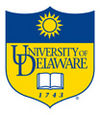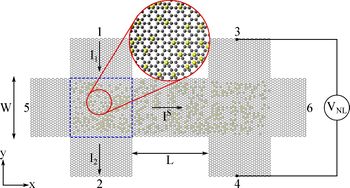PHYS 824: Nanophysics and Nanotechnology
|
|
|
Course Topics
|
| The course provides hands-on experience(including one hour of Computer Lab per week) for graduate students in sciences (physics, chemistry, applied mathematics) and engineering (electrical, chemical, materials) to analyze electronic structure and transport properties of basic classes of nanostructures explored at the current research frontiers
|
- Nanostructures in equilibrium: graphene and other two-dimensional materials, carbon nanotubes, topological insulators, magnetic multilayers.
- Nanostructure out of equilibrium: conductance quantization, quantum interference, spin-dependent tunneling, spin and quantum Hall effects, spin-transfer torque, I-V curves.
- Theoretical techniques: elements of density functional theory (DFT), Landauer-Büttiker scattering formalism, nonequilibrium Green function techniques.
- Experimental techniques: scanning tunneling and atomic force microscopy.
- Applications: nanoelectronics, spintronics, thermoelectrics.
|
|
News
|
- Final Project is posted and due on Friday 12/16 as poster presentation in Sharp Lab 225 at 2:00PM.
|
Lecture in Progress
|
- Application of Landauer-Büttiker formula to quantum interference effects in electronic transport
|
Quick Links
|
|
|
Course Motto
|
- In teaching, writing, and research, there is no greater clarifier than a well-chosen example.
- Formalism should not be introduced for its own sake, but only when it is needed for some particular problem.
- Physics comes in two parts: the precise mathematical formulation of the laws, and the conceptual interpretation of the mathematics. However, if words of conceptual interpretation actually convey the wrong meaning of the mathematics, they must be replaced by more accurate words. (W. J. Mullin)
|
|
ACKNOWLEDGMENT: Parts of the course material is based upon work supported by the National Science Foundation under Grants No. ECCS 0725566, ECCS 1202069, ECCS 1509094 and ECCS 1922689. Any opinions, findings, and conclusions or recommendations expressed in this material are those of the author and do not necessarily reflect the views of the National Science Foundation.
Wiki Getting Started
Consult User's Guide for information on using the wiki software.

